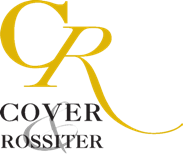If you are using the Statement Charge feature in QuickBooks and need to assess finance charges for past due customers balances, here’s how to do it:
• When you assess finance charges, QuickBooks creates an invoice for each customer's finance charge and increases the accounts receivable for that customer.
• If you use
billing statements, don't print the finance charge invoice that QuickBooks creates. When you send your next statement after assessing finance charges, the finance charges will be reflected on the statement along with any other statement charges.
• It is critical when entering statement charges in the register that you
set a due date for the charge. Without the due date the statement charge will not access a finance charges or age the statement from the current status on an Accounts Receivable Aging Report.
• When you assess finance charges, QuickBooks creates an invoice for each charge.
Step #1: To set up QuickBooks to assess finance charges. Only the QuickBooks Administrator can do this.
Open the finance charge preferences.
• Go to the Edit menu and click Preferences.
• In the Preferences window, click Finance Charge in the list on the left.
• Click the Company Preferences tab.
• Enter your annual interest rate, minimum finance charge, and grace period.
• Enter the name of the account you use to track income from finance charges. Usually, this is an income account.
• (Optional) If you don't want QuickBooks to assess finance charges on overdue finance charges, clear the checkbox for assessing overdue finance charges.
Important: Laws vary about whether you can charge interest on overdue interest payments. Confirm with the appropriate jurisdiction that you are in compliance with that jurisdiction's lending laws.
• Indicate the date (due date or invoice/billed date) that you want QuickBooks to calculate finance charges from.
What these two dates mean.
• Due date: Starts the day the invoice or statement is due.
For example, if a customer is 5 days overdue on an invoice that was due in 30 days, QuickBooks assesses finance charges on the 5 overdue days, but not the original 30 days.
• Transaction date: Starts the day you wrote the invoice or statement.
For example, if a customer is 5 days overdue on an invoice that was due in 30 days, QuickBooks assesses finance charges on the full 35 days (the 30 days to pay plus the 5 overdue days).
(Optional) To be able to print all your finance charge invoices in a single operation, select the Mark finance charge invoices as To be printed checkbox.
• If you send statements, leave this checkbox cleared. QuickBooks will include the finance charges on the next statement to the customer.
• Click OK.
Step #2: Set up Associate Payment Terms with Customers
• Click Customer Center.
• Double-click the customer you want to apply the terms to.
• Click the Additional Info tab and enter the terms you want to apply.
These terms will always be associated with the customer and will automatically fill in whenever you create a
sales form for this customer.
Step #3: Assess Finance Charges.
Go to the Customers menu and click Assess Finance Charges.
•
Select the customers and jobs for which you want to assess finance charges.
o To select an individual customer or job, click in the Assess column opposite the customer or job name.
o To select all the customers and jobs listed, click Mark All.
o To clear everything you've selected, click Unmark All.
Important: Customers and jobs marked with an asterisk (*) have credits in the form of payments or credit memos that you have not yet applied to an invoice. The overdue balance shown in the Assess Finance Charges window does not reflect these credits.
• (Optional) Change finance charge amounts by typing over the amounts shown in the Fin. Charge column.
• To change the interest rate, click Settings and enter the new rate.
• (Optional) If you plan to print the finance charge invoices to send to customers, select the Mark invoices to be printed checkbox.
• If you send statements, leave this checkbox cleared. The finance charges will be included the next time you print statements.
• Click Assess Charges.
For more QuickBooks Tips, explore
http://bit.ly/TipSeries. If you have any questions about this tip or any other tips, please email
Marketing@CoverRossiter.com or call 302-656-6632. Visit our website at
www.CoverRossiter.com/ for more information about our firm and its services.
